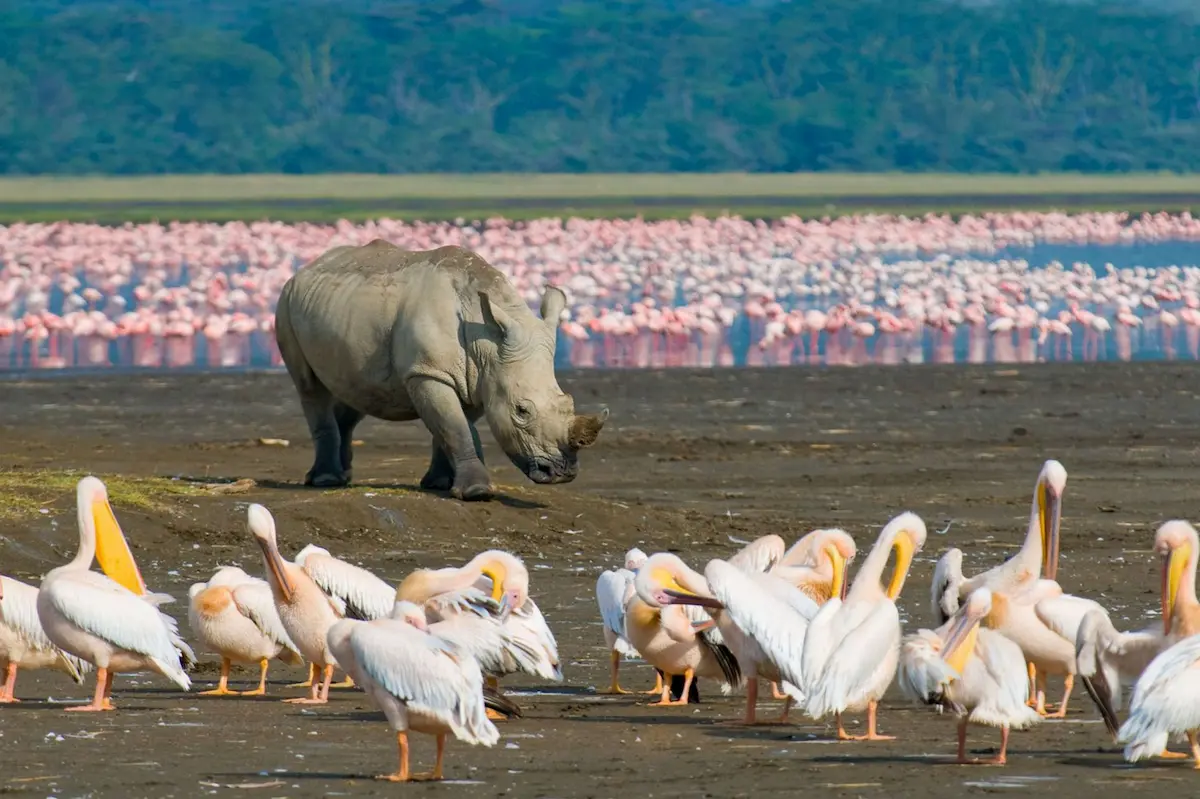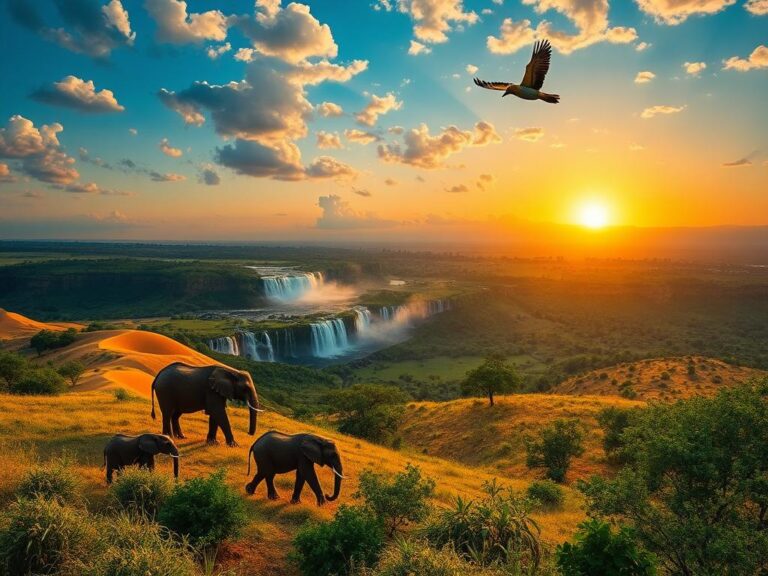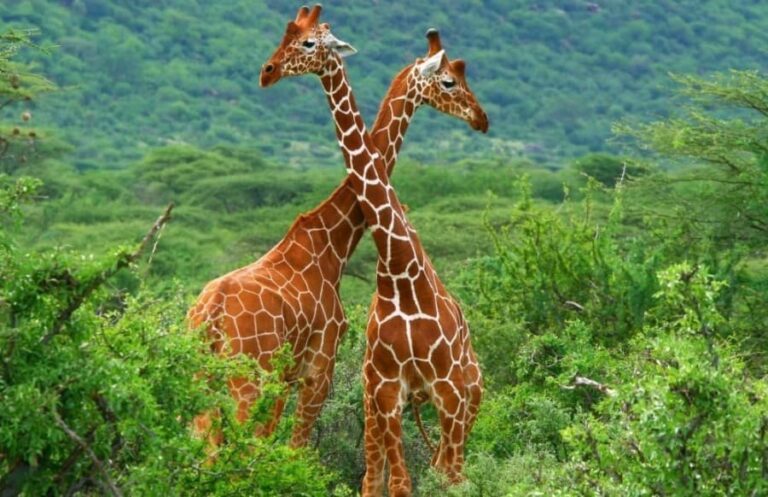
Best Time to Go on Safari in South Africa: Your Ultimate Guide
Best time to go on safari in South Africa is not just about seasonal weather patterns; it’s about aligning your adventure with magnificent wildlife sightings and breathtaking landscapes.
Many people dream of experiencing the wild heart of Africa, where majestic elephants roam and elusive leopards stealthily navigate the underbrush. But when is the ideal time to embark on this unforgettable journey? This article delves into the best times for going on safari in South Africa, each season offering unique wildlife behaviors and stunning natural events.
By the end of this guide, you will have a well-rounded understanding of when to plan your safari, maximizing both your wildlife encounter opportunities and your overall experience, making it one for the memory books.
Understanding the Seasons in South Africa
South Africa experiences four distinct seasons: summer, autumn, winter, and spring. Understanding these seasons helps in planning your safari adventure. The dry season, falling between May and September, is often regarded as the best time to go on safari. This is when the vegetation is thinner, making wildlife easier to spot as they gather around watering holes.
During the summer months of December to February, expect the rains to roll in, bringing vibrant blooms and lively sunsets; however, the foliage may make wildlife more challenging to see. In contrast, the winter months offer crystal-clear skies and cooler temperatures but also heightened activity from predators.
Dry Season (May to September): The Peak Safari Season
The dry season is undoubtedly the best time to go on safari in South Africa. Visibility is optimal as water sources dwindle, drawing herds of animals into the open. From the vast savannahs of Kruger National Park to the rolling hills of Addo Elephant National Park, the dry season offers unparalleled wildlife sightings.
Not only are the animals easier to spot, but you’ll also experience pleasant, temperate weather that enhances your game drives.
According to wildlife expert Andrew Pietersen, “Winter months make for exceptional visibility, and with many animals congregating around fewer water sources, you’re likely to witness thrilling moments in wildlife behavior.” Add in the fact that you might catch breathtaking sunrises and sunsets in the bush, and it’s easy to see why this period is so cherished by safari-goers.
Winter Months (June to August): A Fantastic Opportunity for Wildlife Viewing
During the winter months, the savannah transforms into a striking expanse of dry grasslands and vibrant skies. Cool mornings lead to warm afternoons, creating optimal conditions for wildlife viewing. You stand a higher chance of spotting active predators like lions and leopards during this time, heightening the thrill of the chase.
This time of year is also excellent for bird watching, as migratory species flock to Southern Africa. Birding enthusiasts should keep an eye out for colorful seasonal visitors. The contrast of the bright plumage against the stark landscape is mesmerizing.
Spring (September to November): Nature Comes Alive
Spring marks the transition to warmer weather, making it another ideal season for a safari. The landscape starts to bloom, presenting a rich tapestry of wildflowers and lush vegetation, providing a breathtaking backdrop for wildlife sightings.
In this season, many animals give birth to their young, making it an incredibly exciting time for nature lovers. You’ll have the unique opportunity to witness playful cubs taking their first tentative steps under the watchful eyes of their mothers.
This is a period full of life and energy, as you might see herd dynamics changing with the introduction of new calves. With blooming flora enhancing the scenery, landscape photography opportunities abound.
Summer (December to February): Rainy Season Offers Unique Experiences
While summer is often associated with heavy rains, it offers unique opportunities for wildlife viewing that shouldn’t be overlooked. The lush foliage can obscure visibility, making game spotting more challenging, but the vibrant greens and beautiful colors paint a breathtaking landscape.
Additionally, migratory birds flock to South Africa during this time, providing fantastic opportunities for birdwatching. The sight of flocks of colorful birds against the backdrop of a lush landscape is unforgettable.
As wildlife flourishes after the rains, you might witness spectacular interactions among animal species. Observing animals play in waterholes during warm summer afternoons adds a touch of whimsy to your safari experience.
Humpback Whale Season (June to November): A Different Perspective
If your safari includes the stunning Garden Route, consider timing your trip between June and November, the designated humpback whale season, to witness these magnificent creatures as they migrate along the coast.
While not a traditional safari experience, combining a coastal adventure with a wildlife journey is a remarkable addition to your South African experience. The distant sight of a whale breaching or spyhopping along the coastline is an unparalleled spectacle that will enhance your safari story.
Full Moon Safari: Experience Nocturnal Wonder
For a truly unique experience, plan your safari around a full moon. Some game reserves offer night drives during this magical time, allowing you to see nocturnal animals in their element.
The atmosphere created by the ethereal light offers a wholly different perspective when it comes to wildlife observation. You may catch glimpses of owls hunting or the elusive leopards lounging in the soft illumination of the moonlight.
Post-Rain Safari (March to April): Captivating Landscapes
After the summer rains in March and April, the landscapes of South Africa are lush, vibrant, and bursting with life. This period is ideal for photography enthusiasts eager to capture animals against a backdrop of resplendent greenery and vivid wildflowers.
Post-rain, wildlife interaction rises, as animals take advantage of the nourishment brought by the recent rains. It is common to spot animals emerging to graze in the verdant fields.
Private Reserves and Enhancements to Your Safari Experience
While public national parks and reserves like Kruger National Park are popular, consider the benefits of visiting private game reserves for an enhanced safari experience.
These reserves typically have fewer tourists, which offers a more intimate and personal wildlife viewing encounter. The guides in these private spaces often undergo extensive training and provide a wealth of knowledge, ensuring you come away with a deeper understanding of the ecosystem and its incredible inhabitants.
Consider Your Destination: Unique Peak Seasons
Different parks and reserves may have their peak seasons based on the unique ecosystems present. For example, Kruger National Park is best visited in the dry winter months to enhance visibility, while Addo Elephant National Park thrives in spring when elephants and other wildlife are most active.
Research specific parks and their seasonal dynamics before finalizing your safari plans, as this insight can greatly affect your overall experience.
Avoiding Crowds: Safaris During Off-Peak Times
If you prefer a quieter safari experience, consider visiting during off-peak times, avoiding major holidays and school vacation periods. Traveling during the shoulders of peak seasons allows you to soak in the wonders of the wilderness without the crowds.
This tranquility can ignite a deeper connection to the natural world as you listen to the subtle sounds of the bush, without the hustle of fellow tourists around you. By catering your trip to such times, you’ll have the chance to appreciate the breathtaking solitude of the wild.
Conclusion: Crafting Your Ultimate Safari Adventure
The best time to go on safari in South Africa varies depending on what experiences you are seeking. From the prime dry season offering excellent wildlife visibility to the lush landscapes revitalized after the rains, your safari journey can be as diverse as the wildlife you encounter.
By understanding South Africa’s seasonal variations, tailoring your trip to coincide with these dynamics, and possibly including a few unique experiences like a full moon safari or whale watching, you can create memories that will last a lifetime.
Frequently Asked Questions (FAQ)
What is the best time for game viewing in South Africa?
The dry season, from May to September, is typically the best time for game viewing due to decreased vegetation and concentrated wildlife around water sources.
Can you go on safari during the rainy season?
Yes, while the rainy season (December to February) presents challenges in visibility, it offers a thriving landscape and unique opportunities for bird watching and witnessing wildlife interactions.
Is it safe to go on safari during the winter months?
Absolutely! Winter months provide comfortable temperatures and cool mornings. Safety measures are in place, as guides are highly trained to ensure a secure and enjoyable safari experience.
What are the advantages of visiting private reserves?
Private reserves often have fewer crowds, offer personalized service and well-trained guides who can enrich your understanding of the ecosystem and wildlife behavior.
Is it worth it to plan a safari during the off-peak season?
Yes, visiting during the off-peak season allows you to experience the wilderness in a more tranquil setting with fewer tourists, enhancing the overall adventure.
As you plan your safari, consider these insights and prepare for an extraordinary adventure in South Africa. Share your thoughts, questions, or experiences in the comments below!


